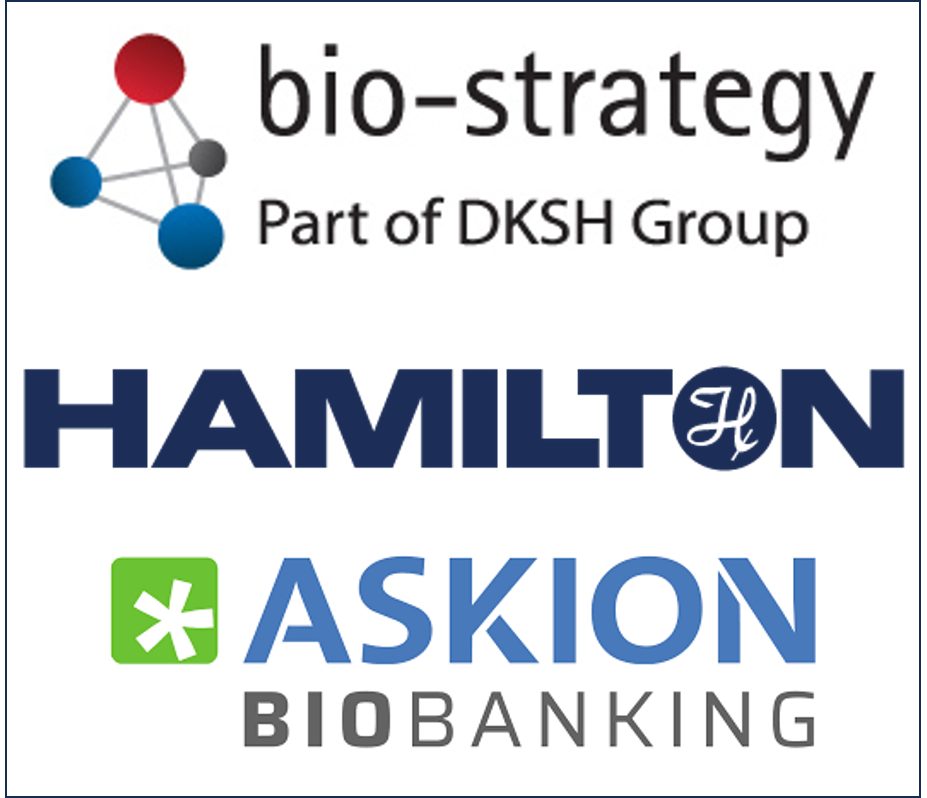Thursday, 17th October ABNA - Biobanking: Shaping the Future Together
Conference Registration
Speed Dating with a Biobanker
Speed Dating with a Biobanker has been proudly sponsored by Brightside Scientific
Session 3: Citizen Science and Biobanking
"Hip to be Square"
- Interoperable Biobanking Networks: Enabling Citizen Science and Decentralized Research through Aminochain - Jelani Clarke
- SciStarter Australia: a new citizen science engagement platform to increase and diversify community participation in research - Frank Grutzner
- South Australian Seed Conservation Centre - Jerry Smith
- Journey with us towards the future with 2D biobanking inventory management solutions - Warren Furneaux
Session 3: Rapid Fire Presentations
Morning Tea and Poster Judging
Tea Time - let's get mingling!
ABNA Seminar Series – Seminar 4: Centralised vs Harmonised Biobanking “The Great Debate”
"Bent out of Shape"
Join us for a lively debate on the merits of centralised vs distributed models of biobanking featuring Jennifer Byrne and Jelani Clarke
Session 4: Biobanking in Space
Session 4: Rapid Fire Presentations
Platinum Sponsor Presentation

David Felici - "Sustainability through Performance: A new era in cold storage"
ABNA is hugely grateful for the contributions and ongoing support of our wonderful sponsors!
Lunch
Don't forget to check out our wonderful posters and stop in on a SIG group meeting during this jam packed break!
Clinical Trials and Population Cohort SIG (Concurrent)
wayne Ng: Ilka Priebe
Title: How can we improve visibility of specimens and biobanks to create better impact to the health and medical research?
PLEASE READ THIS BEFORE JOINING THE ROUNDTABLE
It is widely accepted that biobanking is cornerstone for successful discoveries that can improve human health through the high quality biospecimens. However, literature shows only 10-15% utilisation of specimens procured by the biobanks. Both international and Australia health research communities (both academic and industry) have pointed out that finding specimens remains significant challenges for health sciences and innovation to progress. Contributing factors include ethical/consent disparities, interoperability of specimens and associated data as well as visibility of specimen sources (ie biobanks).
Globally, several initiatives are created to improve the utilisation of biospecimens for research purposes and encourage specimens sharing, such as establishment of biobanking coordination centres (e.g. BBMRI-ERIC, UKCRC Tissue Directory and Coordination Centre) and private biospecimen sourcing Clinical Research Organisation (e.g. Azenta Life sciences) and platforms.
As such, several platforms like BBMRI-ERIC specimen locators and UKTCRC-Tissue Directory have been created for biobanks, specimens and data listing, making these critical resources visible for much wider research community. Furthermore, having strong presence in public and scientific community through scientific forums, advocacy forums and media also improves the awareness of the biobank resources and its importance, for example, UK Biobank and Mark Hughes Foundation Brain Biobank.
The roundtable aims to:
1, Discuss the visibility of existing biobanking initiatives and biospecimens for medical research in Australasia. Including identifying existing resources, gaps and barriers.
2. Brainstorm on ideas to bridge any gaps between biobanks and research to improve visibility/awareness, accessibility and pool resources.
This will be a fact-finding exercise, where the delegates can share their experiences and insights on how we can better enhance the visibility of biobank collections for researchers, with a focus on making samples more accessible and bridging the gap between biobanks and the research
community.
The roundtable is facilitated by Clinical Trials and Population Cohort Biobanking (CTPCB) Special Interest Group.
*NOTE: on some mobiles you may need to turn phone sideways to view complete image*

Biobanking for Biodiversity SIG (Concurrent)
The goal of the Banking for Biodiversity SIG is to understand, improve and promote the use and implementation of biobanking as a conservation action for the management of Australasia’s biodiversity. The group has a diverse membership. As a group, we work with plants, animals, coral, fungi and other taxa, and have members from all career stages.
One of the major aims of the SIG is to promote the value of biobanking to relevant stakeholders. Many of our members feel that biobanking is undervalued and underutilised in the conservation space. In response to this, our SIG is writing a perspectives piece about the role that biobanking plays in the conservation of Australia’s native biodiversity. During this workshop, we will be inviting SIG members and other attendees to participate in the manuscript and will be assigning tasks based on their areas of expertise.
Session 5: Emerging Innovations
"Redefining the Curve"
- Patient perspectives and the impacts on recruitment: Lessons from hepatitis B - Thomas Tu
- Biobanks data. Disrupting norms, forging unity - Eng Chon Boon
- How we are using bioluminescent mouse models of infection to assess the efficacy of new drug classes against superbugs - David Ogunniyi
- Harnessing the Power of Biobanked Microbes: From Donor Stool to Next-Generation Microbial Therapies - Ruben Wheeler
Platinum Sponsor Presentation

ABNA is hugely grateful for the contributions and ongoing support of our wonderful sponsors!
Afternoon Tea and Poster Judging
Caffeine Loading!
Session 6: Legacy Biobanks
"Square Peg in a Round Hole"